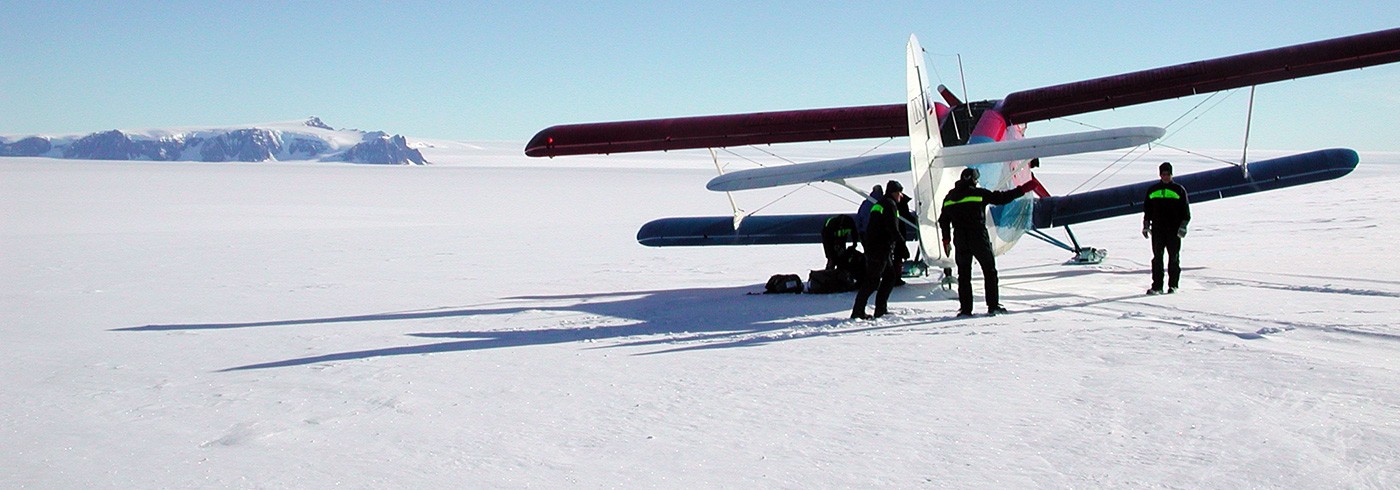Life history adaptations in Antarctic tradigrades
31 January 2004 - 4 February 2004
Tardigrade (species unidentified) from the nunatak Plogen, Dronning Maud Land. Photo: Ingemar Jönsson
Tardigrades are small (approx. 0.2-1.0 mm) aquatic invertebrates found in a variety of ecosystems and microhabitats. They are also one of the most successful resident multicellular animals in contirrental Antarctica. Here they live in mosses, lichens, algae and mineral soils on the mountain peaks (called nunataks) that penetrate the thick ice cover (Sohlenius, Boström and Jönsson., 2004). Their presence in such hostile habitats relies on an extreme tolerance to severe desiccation and freezing (Wright, Westh and Ramløv, 1992). The short and cold polar summer also imposes constraints on the activities of invertebrate populations such as tardigrades. The consequences of these constraints for the evolution of life histories in Antarctic tardigrades have not been studied. In one of the few papers specifically dealing with life history evolution in Antarctic invertebrates Convey (1997) suggested that organisms such as nematodes and tardigrades living in Antarctica may conform to ”adversity-selected” populations (Greenslade, 1983), expected to have high survival and low fecundity.
The main aim of this research project is to investigate the life histories, energetics and same aspects of the biochemistry of Antarctic tardigrade populations, to reveal if specific adaptive patterns have evolved in response to the extreme climatic conditions in continental Antarctica. The project was initiated at SWEDARP 2001/02 (Jönsson, 2003), and activities during SWEDARP 2003/04 were directed towards additional collection of animal material and temperature measurements of substrates, providing complementary information on conditions late in the Antarctic summer.
Fieldwork
During SWEDARP 2003/04 samples of mosses, lichens, algae and mineral soils were collected by Paula Starbäck from the Vestfjella area (nunataks of Basen and Fossilryggen) of Dronning Maud Land, during the period 31 January–4 February 2004.
In total 117 samples were collected (58 mosses, 14 lichens, 11 algae, 34 mineral soils). Samples were dried in a lab module and thereafter kept at low, but non-freezing, temperatures until subsequently stored at -20,C in Sweden. GPS positions were taken for all samples. The temperature of substrates (mosses, algae, mineral soils) was measured at daytime using a digital incision thermometer. Measurements were taken at seven sites with mosses, six sites with mineral (inorganic) soil, and one site with the algae Nostoc. At each site multiple measurements were taken. Similar temperature measurements were made during SWEDARP 2001/02, and together these data will provide information on the microclimate conditions for tardigrades during the Antarctic summer.
Preliminary results
Analyses of the animal material collected during SWEDARP 2003/04 have not yet been undertaken, while some results from the temperature measurements can be presented. The mean temperature of mosses (exclusively from Basen, since mosses are not present at Fossilryggen) was 7.2°C (SD=4.3, 2.7-15.1, N=7), while the mean temperature of mineral soils (mainly from Fossilryggen) was 1.9°C (SD=3.8, -0.7-9.4, N=6). From these limited observations it appears that mosses provide considerably better conditions for activity in invertebrates than mineral soils. Analyses of invertebrate abundance in the same area have also shown higher densities in mosses compared to inorganic soils (Sohlenius, Boström and Jönsson, 2004 ). In a future analysis these data will be merged with data from SWEDARP 2001/02 to describe temperature conditions over a larger temporal range of the Antarctic summer.
Analyses of protective carbohydrates have been made from the material collected during SWEDARP 2001/02. These studies indicate that Antarctic tardigrades of the species Macrobiotus krynauwi do not diverge particularly from temperate species of the same genus with respect to their patterns of carbohydrate accumulation (Jönsson, Persson and Kjellman, in prep.) Ongoing analyses of fecundity patterns suggest that Antarctic tardigrades conform to life history strategies towards low fecundity/high survival with prolonged life cycles.

